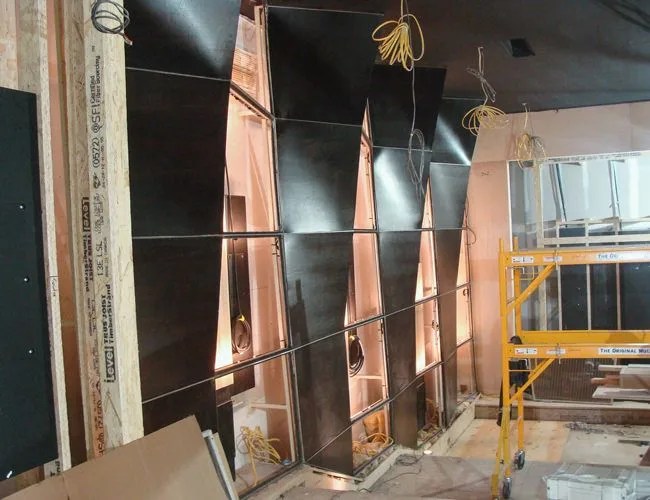In a time where home theater equipment is just a few Amazon clicks away, why do you need an expert? There’s a pride in building your own basement home theater and there’s a world of blogs out there to answer almost all of your questions. Determining the function of certain audio cables and the placement of 5.1 speakers sits amongst the bevy of tech information on the web. But, as we learned from the home theater experts, there’s more than video and audio equipment when it comes to a home theater, and that information can’t be learned off a blog.
The professionals have seen people think the home theater would be a DIY venture. “It’s funny because five years ago when we heard about smart TVs and all that stuff, one of my customers said, ‘Oh, it looks like you’re going to be out of a job’,” said Mark Prancuk of Sight & Sound Showroom. “I said, ‘Oh, yeah, why is that?’ He said, ‘All the smart TVs and all the smart appliances coming down the road. What’s going to happen is, I am going to go to BestBuy, buy a smart TV, bring it home, plug it in, and it will automatically connect to my internet and everything and it’ll just start doing everything, and I won’t need you’”. As he knew the whole time, it wasn’t that easy. “I am getting a lot of customers who have already purchased a new TV, hung it and plugged in the HDMI cable from their receiver and then wonder why their Netflix that’s built right into the TV doesn’t have sound.”
While a solid amount of their jobs are tech support, the professionals offer so much more if you bring them on earlier in the design process. Getting the right kind of advice can not only get the most money out of your equipment in the end, but also avoid repair or updating costs.
It’s a point that Dennis Erskine of The Erskine Group agrees with. “For one reason or another, over time we have been educated to believe that a better speaker will make the room sound better or that a better amplifier or better cables or better decoder is going to improve sound quality. And that’s not entirely true.” In Erskine’s eyes, it’s the basic physics dictated by a room that is most important for a home theater.
“The biggest single impact on the quality of a home theater system’s sound is the room. It’s not the electronics, and it’s not the speaker. And it’s the third biggest impact on the quality of the picture”, he explained further. “We have to be able to understand the dialogue. We’ve got to hear the whispers. We’ve got to understand what they’re saying. And we also have to hear the subtle sounds — the leaves rustling in the background or the squeaky tennis shoes as the killer sneaks up on the back side of victim. And in the vast majority of residential rooms, you don’t hear that.” Tracing this inadequacy in most setups leads back to poor room design.
It’s just like when you play a violin — you’re not going to fill the cavity with cement because you’re not going to get the resonance.
“Softer sound is recorded on a soundtrack at -22 dB and the average background noise in an incredibly quiet house is -33 to -35 dB. So how do you solve that problem? Turn up the volume. But from -22 to -35 dB, that’s a factor of eight. That’s eight times louder. Now, when we’re talking about a whisper, and when we take it eight times louder, that’s a big deal. But the volume control will go across the entire spectrum. It’s not selective. And so what happens is normal sounds — normal dialogue — people are no longer talking to you. They are yelling at you, and then when the train wreck occurs, that’s 105dB: That’s jacked up eight times louder as well so the theaters are being blown out.”

